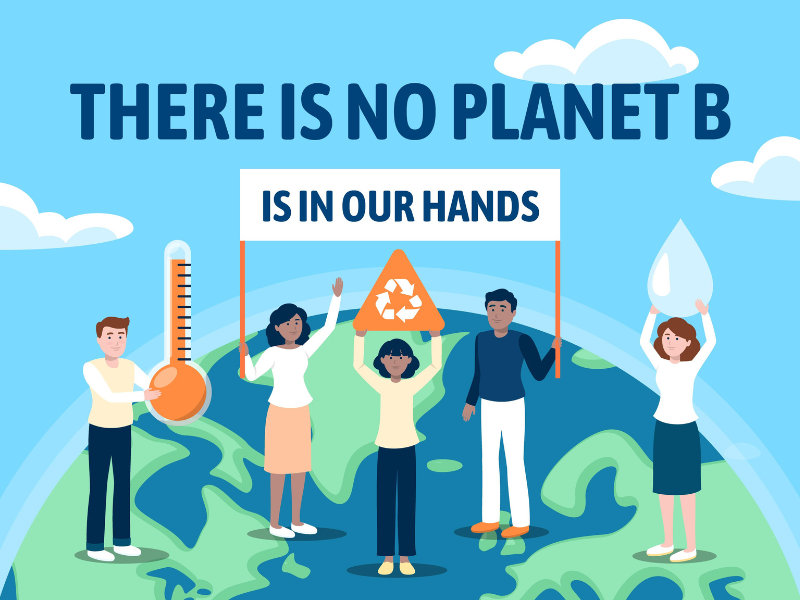Have you heard that the refrigerants used in air conditioners and refrigerators can harm the natural world? Both chlorofluorocarbons (CFCs) and other refrigerants are recognised as harmful to the ozone layer, and some of them also significantly impact greenhouse gases.
Unfortunately, the development of refrigerants has not been an event free of debate. The greenhouse impact caused by driving your car for six months is comparable to that caused by one kilogramme of refrigerant R410a. Consequently, India exercises stringent control over the entry of artificial greenhouse gases and completely prohibits the importation of gases such as CFCs.
Refrigerants can be released into the air due to malfunctioning equipment, improper maintenance, or disposal. Be careful to choose only highly trained and experienced service professionals: When working with refrigerants, a licenced technician will know how to do it with the most negligible negative impact on the surrounding environment.
The ozone layer is essential for absorbing potentially harmful UV radiation emitted by the sun. Still, it has been depleted by many chemicals that humans use to keep their homes cool. UV radiation has been associated with various adverse health effects, including sunburn, skin cancer, accelerated ageing, and blindness.
What exactly makes up the ozone layer?
Ozone (O3) is a naturally occurring gas with a pungent odour but is colourless and odourless to the human eye. It is created when certain bacteria in the atmosphere decompose organic substances in the environment. Normal oxygen molecules (O2) are unreacted and exposed to the sun’s ultraviolet radiation, which produces this substance. Because of a positive reaction that occurs in ozone, a considerable amount of the harmful radiation from the sun does not reach Earth.
The ozone layer can be found in the stratosphere, located between the altitudes of six and thirty miles above the earth’s surface. There are only three ozone molecules for every ten million air molecules in the stratosphere, which is a percentage of 0.00006%. Even though it only makes up a tiny percentage of the atmosphere, ozone is crucial in ensuring that the sun’s rays are safe for all life forms.
Natural processes produce ozone and then break it down. Still, artificial chemicals called CFCs in the atmosphere prevent new ozone from being Pradesh creation of a “hole in the ozone layer” has been attributed to the use of these chemicals, which were common ingredients in early refrigerants. It is more accurate to say that ozone depletion results in a weakening of the ozone layer than it is to say that actual holes are being created in the lactating.
Just what do we mean when we talk about refrigerants?
In early air conditioning systems, some of the refrigerants that were accessible included ammonia, methyl chloride, and sulphur dioxide. In the 1920s, methyl chloride and sulphur dioxide were banned from usage because of their toxicity and chlorofluorocarbons were introduced to take their place (CFCs). Before sulphur dioxide and methyl chloride risks were recognised, their use in the industry was prevalent for several decades.
How much damage does it create in the ozone layer when refrigerants are used?
It wasn’t until the 1970s that scientists realised the ozone layer was losing approximately 4% of its mass every decade. The significant decrease in ozone levels discovered for the first time in 1985 was attributed by the British Antarctic Survey to faulty instruments. It was established that the principal cause of the depletion was the excessive use of synthetic substances, such as CFCs, which were released into the atmosphere through the emission of aerosols and refrigerants. Ozone molecules are susceptible to damage from chlorine and bromine, which are produced when CFCs break down in the presence of sunshine.
“Polar stratospheric clouds” form when temperatures drop below freezing, making polar regions more susceptible to ozone depletion. These clouds are the ideal environment for the chemical processes that deplete the ozone layer. Consequently, the amount of ozone in some regions is lower than the average for the entire planet, leaving behind “holes” or sparse areas.
In the spring, there is a significant depletion of the ozone layer in the stratosphere above Antarctica, which results in the formation of the so-called Antarctic ozone hole.
The importation of autos, boats, and others The air conditioner is commonly seen in homes, workplaces, and other types of buildings worldwide. Air conditioners are available in various sizes and configurations, ranging from enormous central chiller systems to small window units. However, they all have in common: they utilise refrigerants to eliminate heat.
What is the Montreal Protocol?
In September 1987, the Montreal Protocol, which aimed to eradicate ozone-depleting refrigerants, became legally binding. This agreement outlined a timetable for developing zone-safe substitutes for the substances that deplete the ozone layer. There has not been another international agreement that has received as many signatures as this one has (197 countries).
The usage of refrigerants that deplete the ozone layer and, more subsequently, refrigerants that contribute to global warming has significantly decreased since the pact was implemented
Which of these refrigerants poses the most significant?
The main uses of ozone-depleting substances include:
CFCs and HCFCs in refrigerators and air conditioners,
HCFCs and halons in fire extinguishers,
CFCs and HCFCs in foam,
CFCs and HCFCs as aerosol propellants, and
methyl bromide for fumigation of soil, structures and goods to be imported or exported.
Chlorodifluoromethane was a common refrigerant used in older models of air conditioning units for homes (R-22). Both the ODP and GWP values of the refrigerant R-22 are incredibly high (GWP). Currently, the Environmental Protection Agency is working on outlawing this drug.
Even though it does not include chlorine, its successor, R-410A, also has a high global warming potential (GWP). Chemists are still looking for the “ideal” refrigerant, but they are not optimistic that they will find it soon. All we can do is keep our fingers crossed that choices like this will quickly become more mainstream.
Making the switch to a more modern air conditioner that uses less hazardous refrigerants and looking at energy-saving efficiency star-rated appliances can help us use refrigerant-based equipment more efficiently.
Think about this:
Even if your existing air conditioner is only ten years old, the Environmental Protection Agency (EPA) predicts that you might save hundreds of dollars by replacing it with a newer one that has improved energy efficiency. If you still have a gadget that employs refrigerants that are harmful to the ozone layer, you should get in touch with Applewood as soon as possible. Allow us to assist you in the process of upgrading your system.




